This historical region of Italy, which today coincides with the province of Viterbo, was once a mighty kingdom. Heather Crombie ventures into the Land of the Etruscans…
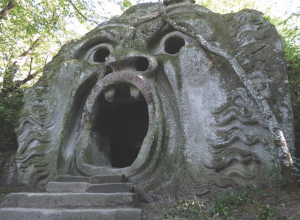
“Here be dragons” might be written across the map of Tuscia, undiscovered as it seems to be. Strange and beautiful, with sights straight out of mythology, you may indeed find the odd dragon in the province of Viterbo. It is home to a centuries-old park built by a prince and abandoned for centuries – full of enormous monsters, giants and unicorns; home to a necropolis the size of a small town, with thousands of underground tombs whose vibrant frescoes look freshly applied; home to all-but-deserted hilltop towns; to fabulously ornate gardens; and, strangest of all, very few tourists.
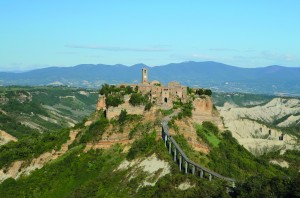
For many, this would be a dream holiday destination. Genuinely peaceful places still exist here – there is stunning art, architecture, landscape and history just waiting to be discovered. And while Italians in nearby Rome and Tuscany holiday here in the summer, it is an area largely overlooked by foreign tourists. Visitors might take a day trip to Viterbo from Rome, but they don’t stay long and leave with such a lot undiscovered.
Within the province of Viterbo, Tuscia formed a seat of power to rival Rome in the Middle Ages, and long before that it was the centre of the Etruscan civilisation. Celebrities, royalty and a succession of popes have lived here. Indeed, the Papacy was the principal source of the province’s power in the 12th century, and the Papal Palace in Viterbo is a stunning monument to this rich history – an incredibly well-preserved piece of architecture.
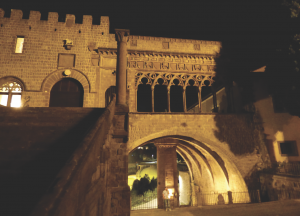
As well as being a safe haven from the chaos of Rome, Tuscia was also a favourite destination because of its healing waters. The unique landscape sees geothermal water bubble up through the earth in a series of hot mineral springs. Some of these can be found at the roadside, or in cultivated fields, like those in Bagnaccio; most of the ‘wild’ springs are maintained by local volunteers and are free for the public to use.
Alice, a singer from Viterbo, told me, “My favourite part of Viterbo is the terme. In the hot water I find I can focus my mind. Day or night, you can just go.” Some of the mineral springs have had spa complexes built around them, the most famous of which is Terme dei Papi (The Popes’ Spa).
The waters here are from the Bullicame springs and are considered to have powerful healing properties; the ‘medical spa’ has the look of a hospital about it. The focal point is the large outdoor pool, which is fed by the thermal spring. It is a popular spot for local people, particularly when it opens late on Saturday nights (until 1am) and the light reflections and soothing water create an experience that feels quite magical.
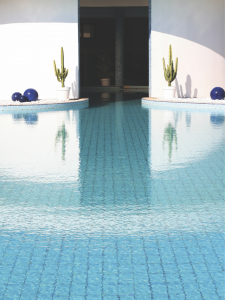
Many of the treatments involve mud from a local volcanic lake – the location of which is a closely guarded secret. I particularly enjoyed visiting the historic steam rooms, where benches have been arranged around the naturally-forming stalagmites and stalactites that result from thousands of years of mineral deposits, running with hot spring water.
In Tuscia you can spend the morning in the Etruscan steam caves where ancient civilisations bathed, and the afternoon at the Necropoli dei Monterozzi, where they buried their dead. This Etruscan cemetery is now a UNESCO Heritage Site and has more than 6,000 tombs. Around 200 of these are beautifully painted and 20 are open for public viewing. The necropolis stands on high ground in Tarquinia, on a great swathe of land dotted with olive trees that was first excavated in the early 20th century. Now visitors can descend underground and appreciate individual tombs, together with the frescoes and statues that adorn them.
Death was celebrated by the Etruscans, and tombs were sites for wild parties on burial night, with feasting and drinking and fornication all considered to be good ways of honouring the dead. Echoes of that ancient past are strong here, with such well-preserved images underground. Expect to see leopards, demons, dolphins, musicians and saucy scenes, mostly from the 6th century BC. It is the strangest feeling, going down the steps into each tomb, trying to grapple with the timespan between the building of the necropolis and the modern day. Thousands of items have been excavated from the site and are preserved in the Tarquinia National Museum. This unique collection gives a rare insight into Etruscan life and the items are breathtakingly well-preserved.
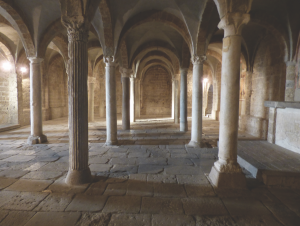
There are further remnants of Tuscia’s past in nearby Tuscania, with Etruscan sarcophagi in the Chiesa di San Pietro. This peaceful church also has an incredibly well-preserved mosaic floor, dating to the 8th century AD, as well as a superb 28-column crypt. The church lies on a rise just outside the town itself, the streets of which have a rather filmic quality. Walk down the higgledy-piggeldy central street just before sunset, past people enjoying aperitivi at any of the bars, to the city walls. From here the view of the surrounding hills and valleys is splendid, especially in the early evening with long shadows and evocative silhouettes against a colourful sky.
